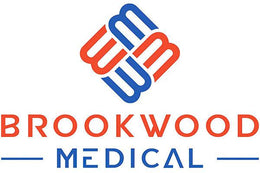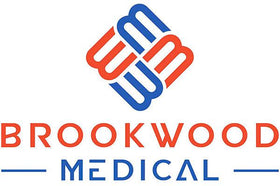The Hidden Effects of Face Masks on Communication and Social Interaction

The COVID-19 pandemic has brought about significant changes to our everyday lives. Among the most visible changes has been the widespread use of face masks. While primarily intended for health and safety, face masks have also altered the way we communicate and interact socially. In this article, we will explore how face masks, particularly those with a PM 2.5 mask filter, impact our communication dynamics, facial expressions, and social interactions.
Understanding Face Masks and Their Importance
Face masks serve as protective barriers, preventing the spread of respiratory droplets that can carry viruses and bacteria. Among the different types of face masks available, those equipped with a PM 2.5 mask filter stand out for their ability to block particulate matter, offering a higher level of protection. As we delve into the implications of wearing masks, it's essential to comprehend their multifaceted role, not just as health devices but also as tools that influence our social behaviors.
Facial Expressions and Non-Verbal Cues
The Role of Facial Expressions in Communication
Facial expressions comprise a significant part of our non-verbal communication. They express a range of emotions, from happiness to sadness, and can significantly influence our interactions with others. Unfortunately, wearing a face mask, especially when only the eyes and forehead are visible, obscures these vital non-verbal cues.
Masked Emotions and Misinterpretations
When our mouths are covered, the ability to interpret emotions based on facial expressions diminishes. Research indicates that people often struggle to gauge others’ feelings when a mask conceals the lower part of their face. This situation can lead to misunderstandings and misinterpretations in social contexts, potentially creating awkward situations in conversations.
Verbal Communication: Clarity and Tone
Impact on Speech Clarity
Communication is not just about what we say; how we say it matters greatly. Masks can muffle speech, making it increasingly difficult for listeners to understand what is being communicated. Phrases become jumbled, and tones may not carry as effectively. The PM 2.5 mask filter does provide added safety, but its material and design may affect the clarity of verbal exchanges even more.
The Influence on Interpersonal Connection
When masks muffle our speech, the lack of clarity can create barriers. Establishing a strong interpersonal connection requires authentic communication, and when words are difficult to decipher, the connection may weaken. Furthermore, individuals may feel a sense of distancing due to this communication gap, impacting relationships, whether in personal or professional settings.
Emotional Connections and Relationships
Building Trust in a Masked World
In any relationship, trust is essential. The inability to see facial reactions can create a sense of uncertainty, making it more challenging to foster trust in situations where reading emotions is crucial. People may feel more guarded, unsure of the intentions and feelings of those around them. This emotional distance can impact both new and ongoing relationships significantly.
Creating New Norms in Communication
As society adapts to prolonged mask-wearing, new norms are evolving. Individuals are finding innovative ways to communicate, such as using more pronounced body language, vocal intonations, and even enhanced eye contact. Embracing these changes may help bridge the communication gap caused by masks, but it requires a conscious effort on everyone’s part.
Social Interaction in Different Settings
In-Person Gatherings: Challenges and Solutions
Even before the pandemic, in-person gatherings relied heavily on facial expressions and verbal cues. Now, with the addition of face masks, these settings have become more complicated. Many social cues are lost, leading to uncertainty and hesitation in engaging in conversations.
- Small Talk Struggles: The casual interactions that often break the ice can feel daunting without the full range of facial expressions.
- Group Dynamics: Being in a group can become less cohesive, as individuals may be reluctant to speak freely when unsure if they can be understood.
To address these challenges in an environment where masks are the norm, hosts of gatherings can encourage open dialogue by using intentional verbal cues, prompting questions, and inviting participation more actively.
Workplace Communication Challenges
The workplace has transformed dramatically, and with it, the need for effective communication strategies has become paramount. Masks may hinder professional interactions, whether in meetings or casual exchanges among coworkers. The complexity of miscommunication can lead to frustrations, impacting team cohesion and productivity.
- Virtual Meetings: The rise of virtual meetings has provided a workaround, as participants can engage without masks. However, the challenge remains in translating the rapport built during in-person encounters into the digital realm.
- Encouraging Openness: Employers can foster communication by encouraging a culture of openness where employees can express their thoughts without fear of misinterpretation.
The Psychological Effects of Mask Wearing
Addressing Anxiety and Isolation
The ongoing need for masks may contribute to feelings of anxiety and isolation for some individuals. When face-to-face interactions feel challenging, the motivation to engage in social activities may diminish. This reluctance can have a cascading effect on mental health and overall well-being.
It's essential to be mindful of these psychological effects. Finding ways to connect with others virtually or in safe settings can help mitigate feelings of loneliness. Support groups and community initiatives can also play a crucial role in promoting mental wellness in a masked world.
Building Self-Awareness and Empathy
Interestingly, the necessity of face masks can serve as an opportunity for growth in self-awareness and empathy. Understanding that others may struggle with communication barriers cultivates compassion and understanding. As we navigate this masked existence, we can learn to be more patient and accommodating, forging stronger relationships based on empathy.
Innovative Solutions to Enhance Communication
Transparent Masks: A Game-Changer?
The emergence of transparent masks may provide a promising solution. These masks allow for visibility of facial expressions while still offering a level of protection. Although they might not have the same efficiency as traditional masks with PM 2.5 mask filters, they can alleviate some communication challenges, especially in contexts where facial expressions play a significant role.
- Language and Child Development: Transparent masks can be beneficial in educational settings, particularly for children learning language skills. Seeing the mouth movements of instructors can enhance learning experiences.
- Boosting Connection: In personal interactions, transparent masks can facilitate better emotional engagement, helping to counteract feelings of isolation.
Technology as an Ally
With the advancement of technology, digital communication tools have unlocked new avenues for interaction. Virtual platforms allow individuals to maintain social connections despite physical barriers, enabling video calls, online games, and virtual events. These alternatives can reduce feelings of disconnection and enhance relationships in a time of masking.
Adaptation: Embracing the New Normal
Adjusting to a world where face masks are commonplace necessitates a collective effort to redefine communication and social interactions. Understanding the impact of wearing masks is crucial for navigating these new dynamics. By consciously adopting strategies to improve communication, such as actively listening, being patient, and utilizing available technology, we can foster a greater sense of connection.
Final Thoughts: Unlocking the Power of Connection
The era of face masks may present challenges to communication and social interaction, but it also offers opportunities for growth and adaptation. By embracing changes, utilizing innovative solutions, and being mindful of the feelings of those around us, we can unlock the power of connection in this new normal. Whether we’re donning a PM 2.5 mask filter or opting for transparent alternatives, fostering understanding and empathy will lead to stronger relationships, paving the way for a future where social interaction thrives once again.






